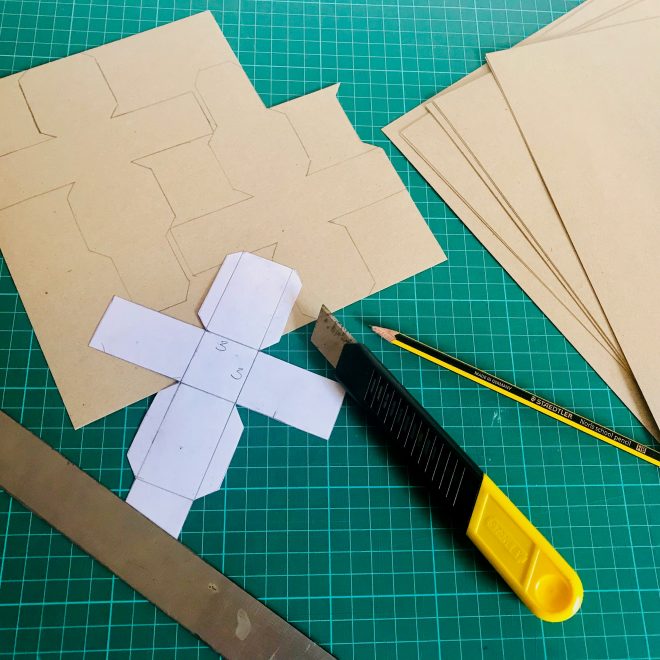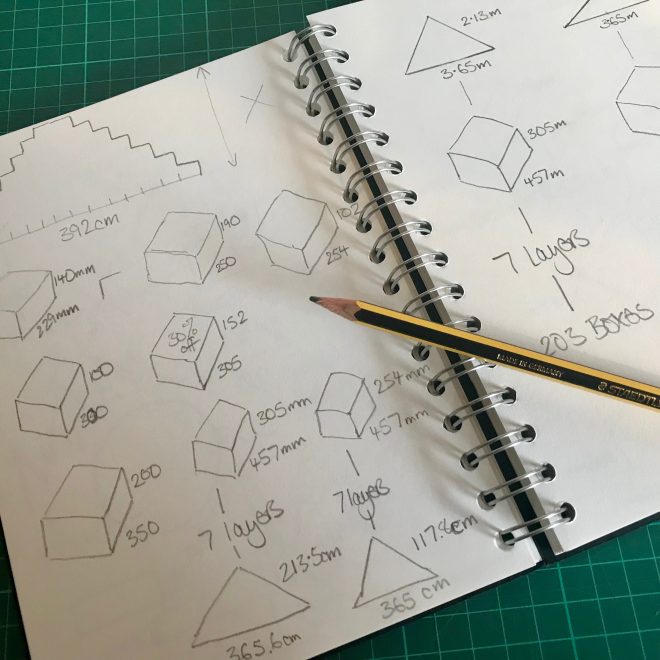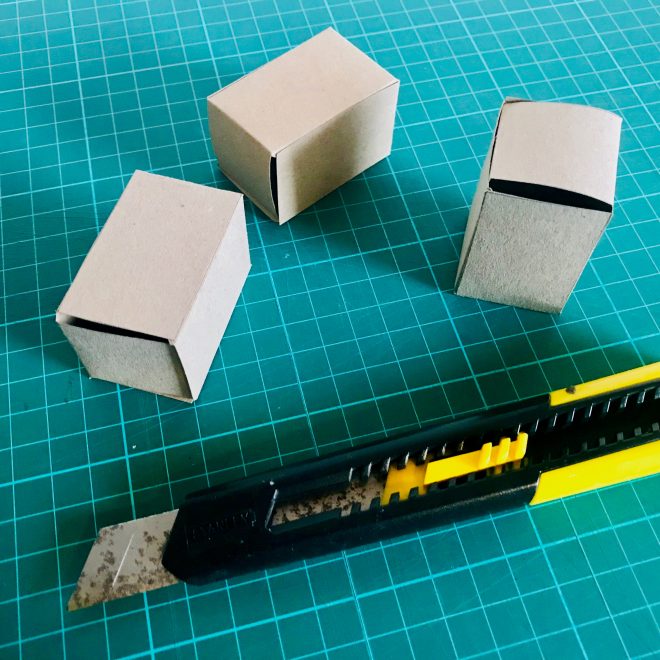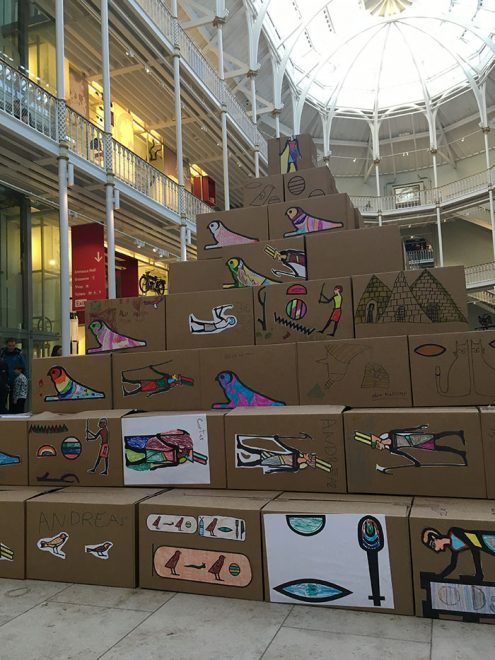I received a phone call, out of the blue, from Emma Webb in the Learning Team. “Hannah, would you be interested in building a pyramid with the public, in the Grand Gallery, at the National Museum of Scotland?”
Of course I leapt at the chance, but I’d never built a huge pyramid before. I hear that is Richard Branson’s approach to business – say yes, then figure out how to do it. Well if it works for Richard…
Planning
I’m a participatory artist with years of experience of working with the public, of museum projects and of building sculptures. Now, how to go about building a pyramid? The brief was for visitors to take part in the construction of a pyramid. We wanted it to have impact, so be an impressive size, but only had a few hours to achieve it. We settled on cardboard boxes and masking tape as our building materials.
Maths
This lead to much searching of cardboard box suppliers and a lot of maths. When I headed off to art school in my late teens, I thought I would leave maths far behind. It turns out, however, I need to use maths incredibly frequently for planning projects. There are budgets to balance, designs to be crafted and of course the dreaded annual tax return!

I began by estimating how tall we could build it. I needed to be able to reach the top, to place the final block. However, the shape of a step ladder is not well suited to the shape of a pyramid. It was then that I decided to build the layers up while leaving a channel in the centre to make it possible to reach the top.

Numerous sketches came next, to help me work things out. This was followed by making 3D scale models of the cardboard boxes. The boxes measured 30x30x50cm, my models measure 1/10 of this, at 3x3x5cm. I found the 1cm squares of my cutting mat incredibly useful for making a 2D design for each of the seven layers. (On day two we went even more ambitious and created eight layers).

Decoration
We decided that we should decorate the pyramid. A colourful pyramid would be more eye-catching, and allow participants to get hands-on with hieroglyphics.
Enter Curator Dan, full title: Dr Daniel Potter, Assistant Curator: Revealing Cultures Project. Dan was incredibly enthusiastic and supportive of the project, supplying us with information, hieroglyphics and generally keeping us on the right track.
The event
We ran the pyramid build to celebrate the opening of the new Ancient Egypt gallery.
For the events, I employed one of my regular team, heritage facilitator, Marie Bergström to take charge of the decoration quarry area. This left me free to focus on the build. We were also very grateful to have the support of the Learning Team and lots of keen volunteers who kindly gave up their time.
We encouraged people to work together in teams. We even suggested that they take inspiration from the Egyptian builders by coming up with their own team names. The Egyptians went with catchy titles such as The Friends of Khufu and The Drunkards of Khufu. My favourite name from the museum build was simply titled Team Bob.

Visitors spent a great deal of time carefully embellishing their “stone blocks”, before heading over the building site to add it to the pyramid. It was wonderful for all involved to witness the pyramids take shape.
